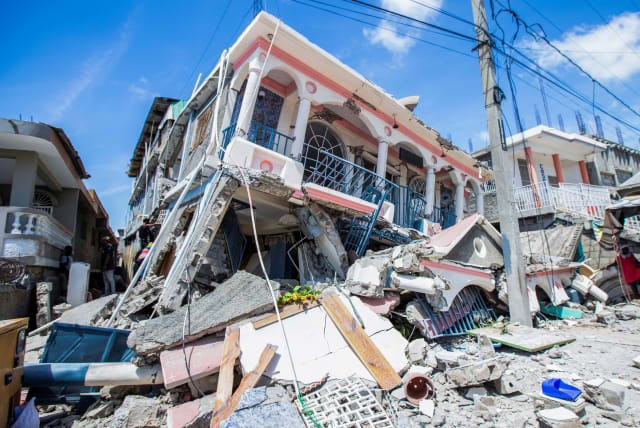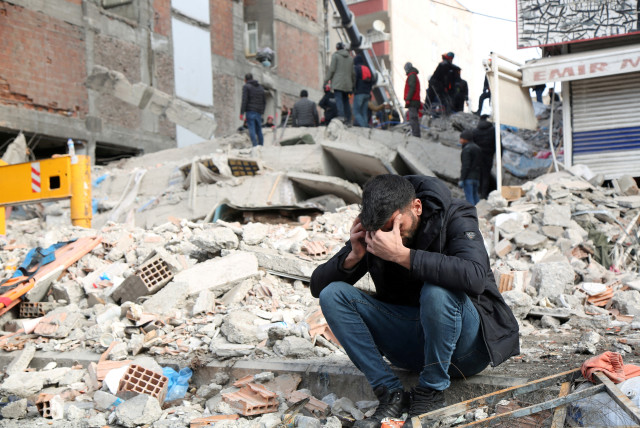Soil liquefaction: What is the destructive, earthquake-related phenomenon?

An Israeli-French research revealed new insights into the natural, destructive phenomenon of soil liquefaction during earthquakes.
Soil liquefaction – a natural, destructive phenomenon accompanying earthquakes – has traditionally been associated with undrained conditions near the earthquake epicenter.
But new research conducted by Dr. Shahar Ben-Zeev at the Hebrew University of Jerusalem (HU) and France’s University of Strasbourg has unveiled an amazing discovery – that liquefaction can occur under drained conditions even at remarkably low seismic-energy density levels.
The research offers a comprehensive explanation for earthquake far-field liquefaction events that have long puzzled scientists and marks a profound shift in our understanding of soil liquefaction – allowing the performance of more precise assessments of its potential and associated risks, ultimately bolstering efforts in earthquake engineering and preparedness.
The study, entitled “Drainage Explains Soil Liquefaction Beyond the Earthquake near-field,” has just been published in the prestigious journal Nature Communications.
What do we know about soil liquefaction?
The team challenged scientists’ conventional understanding of soil liquefaction and significantly reshaped the understanding of earthquake-related soil deformation. The study highlights how seismic shaking, even in drained conditions, triggers interstitial fluid flow within the soil, leading to the accumulation of excess pore-pressure gradients and the subsequent loss of soil strength.
Drained liquefaction unfolds quickly, guided by the propagation of a compaction front, with its speed determined by the rate of seismic-energy injection. It’s one of the most catastrophic earthquake-related phenomena. During and after liquefaction, buildings and infrastructures sink, float, and tilt, and the ground may spread, crack, settle, or initiate a landslide.
Liquefaction damage often leads to extensive human casualties, destruction of lifelines, and economic losses that could force the complete abandonment of formerly inhabited areas, posing a significant challenge to community resilience.
Traditionally, liquefaction has been understood as a predominantly undrained process that occurs under high-energy-density conditions. This conventional view left many earthquake liquefaction events unexplained, particularly those occurring far from the earthquake epicenter, where energy density is significantly lower.
Dr. Shahar Ben-Zeev, guided by Prof. Einat Aharonov from the Hebrew University of Jerusalem (HU); Prof. Renaud Toussaint from the University of Strasbourg; and Prof. Liran Goren from the Ben-Gurion University of the Negev (BGU) in Beersheba conducted this research.
What sets this study apart is its unique combination of theoretical work, numerical simulations, and experimental validation, they said. “Furthermore, in an era marked by a continual increase in the construction of reclaimed land and artificial islands, both highly susceptible to soil liquefaction, this research becomes even more pertinent.”
As most earthquakes in the past took place before the modern instrumental era, seismologists rely heavily on the interpretation of geological features to compile complete earthquake catalogs.
This groundbreaking study, said the researchers, fundamentally shift our understanding of the conditions that may have caused liquefaction-related geological features, hence calling for revising the estimated earthquake magnitude calculated by standard methods.
Understanding soil liquefaction is thus crucial as it directly affects public safety, infrastructure resilience, water resources, and the ability to manage and mitigate earthquake consequences in susceptible regions.
Jerusalem Post Store
`; document.getElementById("linkPremium").innerHTML = cont; var divWithLink = document.getElementById("premium-link"); if (divWithLink !== null && divWithLink !== 'undefined') { divWithLink.style.border = "solid 1px #cb0f3e"; divWithLink.style.textAlign = "center"; divWithLink.style.marginBottom = "15px"; divWithLink.style.marginTop = "15px"; divWithLink.style.width = "100%"; divWithLink.style.backgroundColor = "#122952"; divWithLink.style.color = "#ffffff"; divWithLink.style.lineHeight = "1.5"; } } (function (v, i) { });

